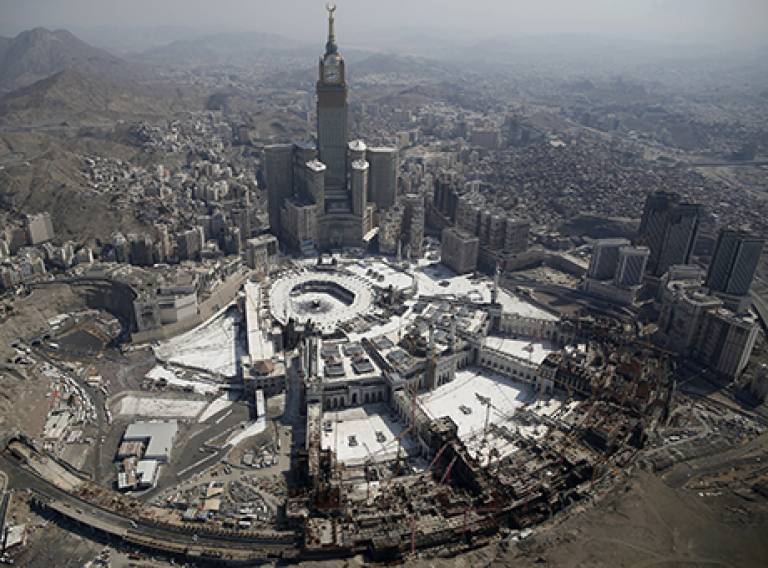The Holy City of Makkah. Growth, Informal Areas and Urban Identity
01 December 2016, 5:30 pm–7:00 pm

Event Information
Open to
- All
Organiser
-
The Bartlett Development Planning Unit
Location
-
Room 101, DPU, 34 Tavistock Square, London, WC1H 9EZ
The holy city of Makkah, currently home to about 2.2 million inhabitants, witnessed massive spatial change in the past three decades. In the midst of this Haj and Umrah[1] driven growth vast swaths of informal areas, mainly occupied by non-Saudies without legal residential status, emerged. Available evidence suggests that such areas now comprise roughly 40% of the city’s footprint and population, a phenomenon placing enormous urban challenges and one which is being confronted by local authorities with increasing resolve.
This presentation will shed light on Makkah’s spatial growth past few decades, the emergence and growth of informal areas, critically review recent efforts to address the challenge and make some conclusions with special emphasis on preserving Makkah’s urban identity.
Muhammad has been engaged in spatial planning practice, teaching and research for the past thirty years; mainly in the Middle East but also and over shorter spells Australia and Germany. He held senior positions with the German Agency for Technical Cooperation (GIZ) in Yemen and Jordan, the International Labour Organization (ILO) in Jordan and the UNHABITAT in Egypt.
He also conducted numerous short term missions for private, public and international clients in urban and regional planning, urban design, development planning, project/program evaluation and capacity building. He held teaching positions at the University of Jordan, the Royal Melbourne Institute of Technology (RMIT) and currently holds an Industrial Professor position at the German Jordanian University in Amman, Jordan.
Dr Kadhim holds an Architectural Engineering Degree from the University of Baghdad and a PhD degree in Town and Country Planning from the University of Manchester.
 Close
Close

